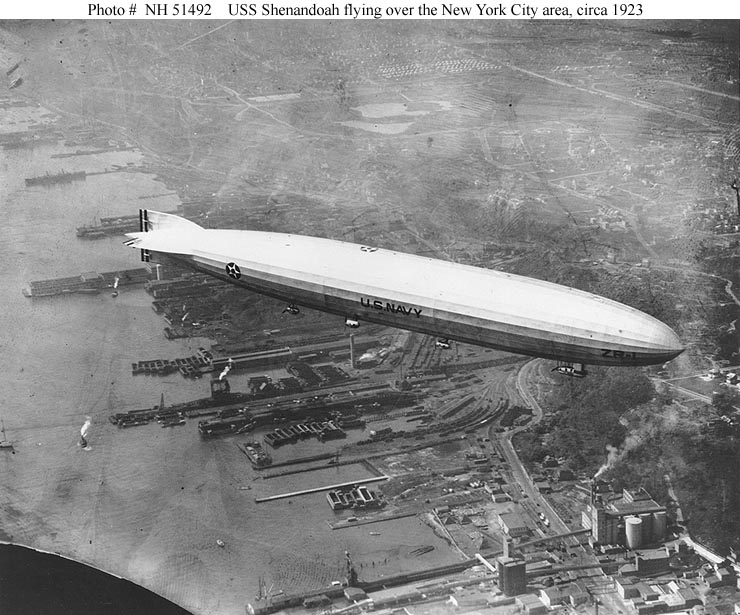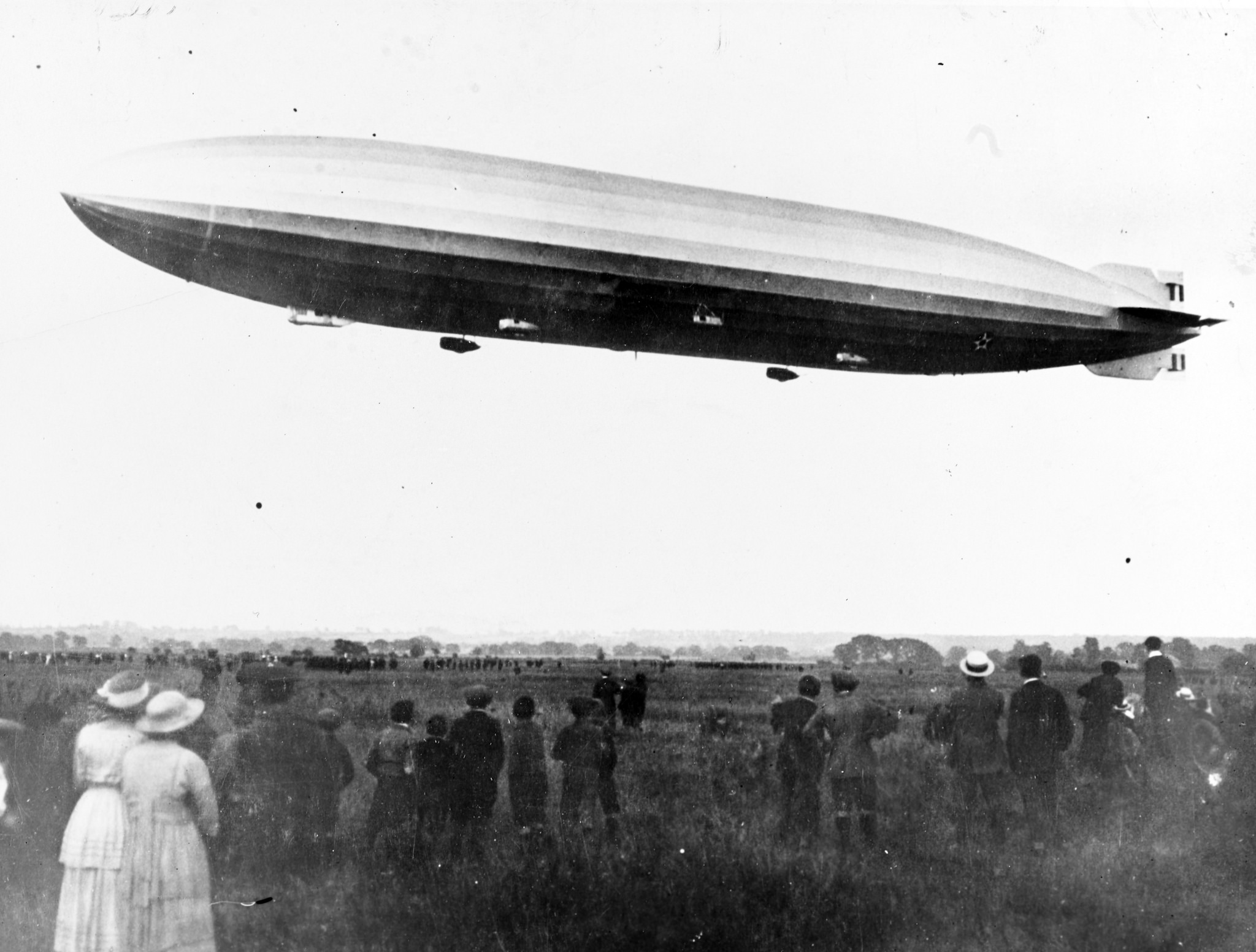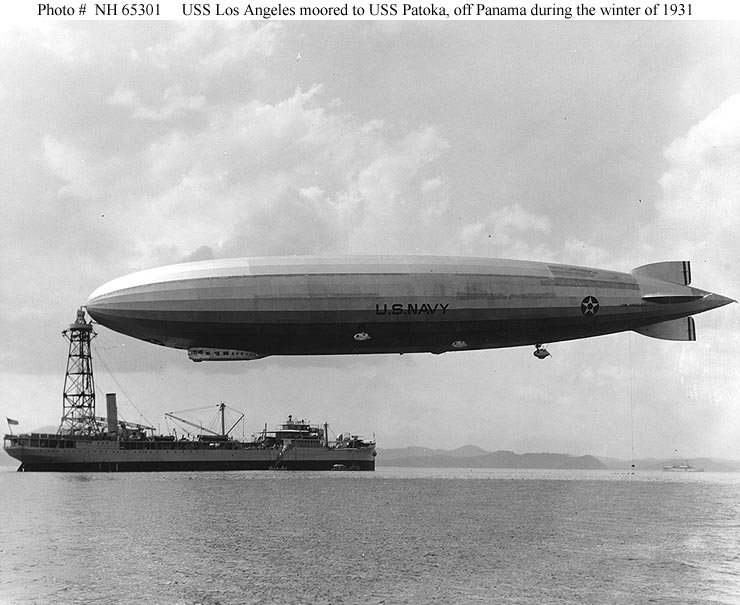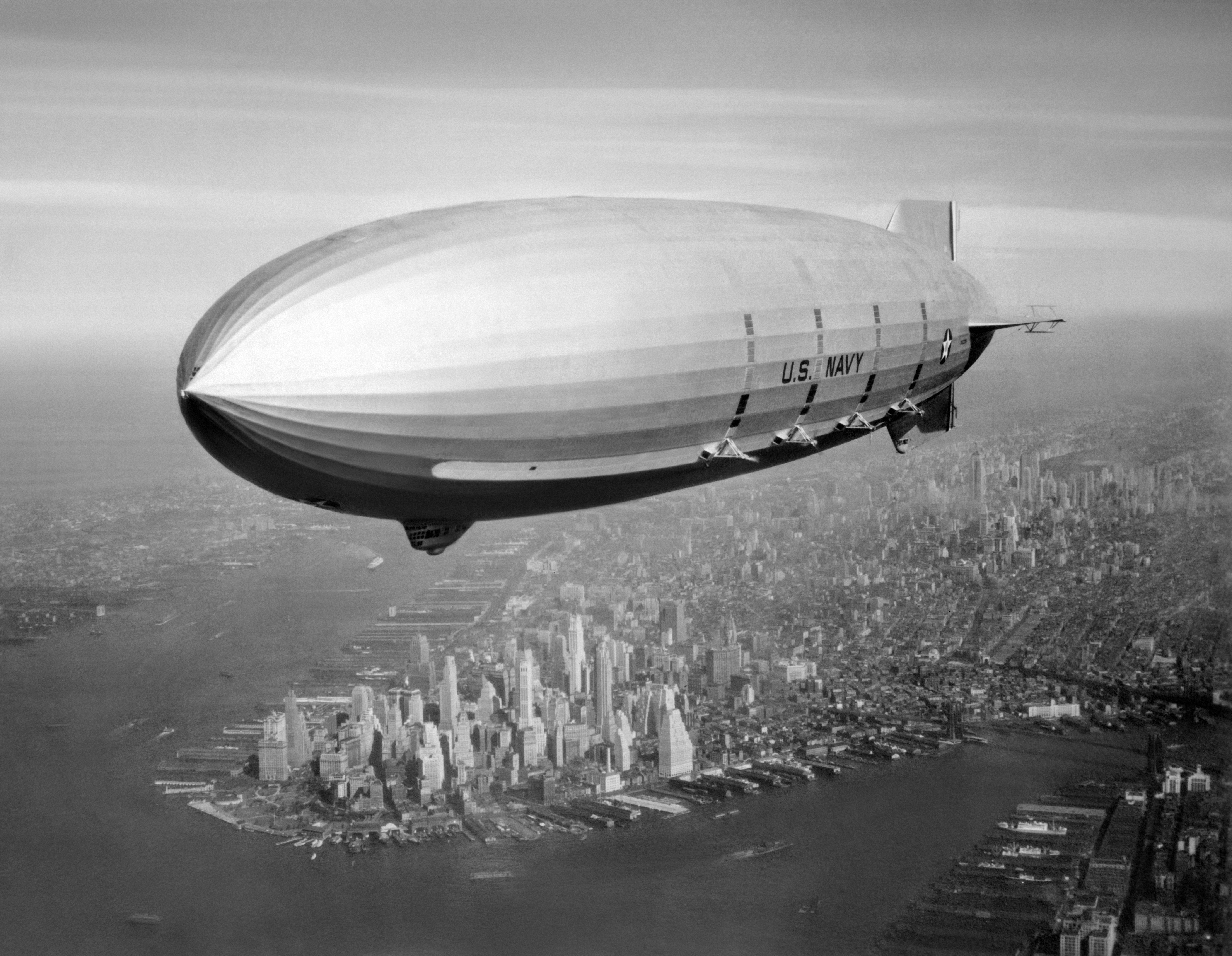USS Macon (ZRS-5)
Wreck Location
The USS Macon lies off the coast of Monterrey, California in 15,000 feet of water. Being a rigid airship, Macon's remains are flattened like a pancake with the fabric mostly having been eroded or eaten away since her loss in 1935. However, the airship is mostly untouched, only a few artifacts having been recovered for the sake of historic preservation. Among the remnants are the tethering hook, the helium cells, the German Maybach engines and the Curtiss F9C-1 Sparrowhawk pursuit planes. The wreck was discovered in 1991 by the Monterrey Bay Aquarium Research Institute (MBARI). A more detailed expedition and sonar scan survey was completed in 2005 by MBARI. In 2006, another visit was made to the wreck by both MBARI and NOAA using ROVs and creating a photomosaic of the wreck. The USS Macon is a protected wreck site in the Monterrey Bay National Marine Sanctuary and is on the National Register of Historic Places as of 2010. The wreck is inaccessable to recreational diving due to its extreme depth. Only manned submersibles and ROVs can reach it.
~ GPS Shipwreck Location ~
Latitude: 36° 17' 26.9988" N Longitude: -121° 59' 52.0008" W
Description
To those that know of the rigid airships, USS Akron (ZRS-3) and USS Macon (ZRS-5) are not only among five rigid airships ordered and operated by the United States Navy, but are machines that evoke the imagination with their complexity and innovative features. The two comprised the Akron-class rigid airship series and are one of the few if not the only known aerial aircraft carriers to have ever existed.
Inspiration for rigid airships used in the United States came from earlier use and experiments by the British government and the success of the Zeppelin rigid airships by Germany in the first World War. One of the main engineers and designers of Imperial Germany's Zeppelin program, Karl Arnstein, immigrated to the United States after the war and became part of the US Navy's experimental rigid airship program.
 (USS Shenandoah (ZR-1), the first naval airship. Naval Heritage and History Command Photo No. 51492.)
(USS Shenandoah (ZR-1), the first naval airship. Naval Heritage and History Command Photo No. 51492.)
The first airship built for the Navy was the USS Shenandoah (ZR-1). Her design was that of a captured German Zeppelin found in France in 1917, but modified heavily to meet American military standards. The Shenandoah was filled with helium unlike the earlier hydrogen Zeppelins she was based off of. Shenandoah also served as a prototype for the US Navy rigid airship program. In 1925, the Shenandoah crashed in southern Ohio during a violent storm.
 (The Anglo-American R-38, aka ZR-2, in flight over England. Naval Heritage and History Command Photo No. NH 1216.)
(The Anglo-American R-38, aka ZR-2, in flight over England. Naval Heritage and History Command Photo No. NH 1216.)
The Navy had also purchased the British Zeppelin R-38 during construction in October 1919 right as the British were about to cancel its construction. Unlike the later Shennandoah, the British built rigid airship, now known as the ZR-2, did use the traditional hydrogen gas as means of aerial buoyancy. At the time of construction, the ZR-1, later the Shenandoah, was under construction in the United States. R-38, aka ZR-2 first flew in 1921. While undergoing testing in England before being handed over to the US Navy, the main structure of the British built airship, still registered as R-38, crashed on August 23, 1923 into the Humber estuary due to massive structural failure of poor design. She had a crew of 32 Britons and 17 Americans. Three of the four survivors were British while the fourth was American.

(The USS Los Angeles (ZR-3) docking onto the USS Patoka (AO-9) in 1931. Naval History and Heritage Command Photo No. NH 65301.)
The third airship constructed was the USS Los Angeles (ZR-3). She was originally the German Zeppelin LZ-126, but was handed over to the United States as a war reparation by Germany for damages caused during World War I. When she left Germany and arrived in Lakehurst, New Jersey in 1924, LZ-126 was recommissioned as the USS Los Angeles and had her hydrogen replaced with helium in response to the US Army dirigible Roma crashing in Virginia and the R-38/ZR-2 crash in England a year earlier. Los Angeles would go on to serve a successful Naval career despite a silly incident in 1927 where the airship lost control and hung vertically to its docking pole by her nose at Lakehurst, New Jersey.
Due to the crash of Shenandoah and the explicit clause between Germany and the United States stating Los Angeles couldn't be used in military exercises upon American acquisition, the Navy comissioned Karl Arnstein to design a dedicated rigid airship class. The airships were to be gigantic, each having a length of 785 feet, a width of 133 feet and a height of 146 feet. They were also to carry a maximum of five pursuit fighter aircraft. The Curtiss F9C-1 Sparrowhawk was designed specifically for this use. The new rigid airships were to be powered by 8 German built Maybach 12 cylinder gasoline engines, each powering a single two bladed wooden propeller per engine. They were also to be armed with eight 30 caliber machine guns. The new airships were to be numbered ZRS-4 and ZRS-5. The program was given the go ahead in 1926 following the crash of the Shenandoah.
 (USS Akron (ZRS-4), the sister ship of the USS Macon (ZRS-5) docking in California in 1932.)
(USS Akron (ZRS-4), the sister ship of the USS Macon (ZRS-5) docking in California in 1932.)
The American based Goodyear Company and the German airship builder Luftschiffbau Zeppelin created a dual consortium called the Goodyear-Zeppelin Company based in Akron, Ohio and were awarded the contract of constructing the two airships. The German-American firm built the Goodyear Airdock in 1929 for just that purpose. Construction began in 1929 on ZRS-4. She was walked out of the hangar in October 1931 and comissioned as the USS Akron (ZRS-4). Akron was delivered to the Navy at Lakehurst, New Jersey.
 (USS Macon (ZRS-5) over New York City in 1933.)
(USS Macon (ZRS-5) over New York City in 1933.)
With construction having been mostly completed on the Akron, the construction of ZRS-5 commenced in May 1931. In March 1933, ZRS-5 was moved out of the hangar and comissioned as USS Macon (ZRS-5). Her namesake was the city of Macon, Georgia. She was also built with three bladed metal variable pitch propellers, which had been refit aboard the Akron in 1932. Before the Macon could make her first flight, her sister ship, the USS Akron, crashed off the coast of New Jersey on April 4, 1933 killing 73 people including Admiral Moffett. Nevertheless, Macon was accepted by the Navy and underwent testing at Lakehurst.
The Macon became involved in US Navy fleet exercises. New techniques and operating procedures were performed and perfected, some of which were put in use due to the loss of the Akron. During the exercises, Macon was kept out of sight and would often launch her Sparrowhawk fighters. The fighters would be dropped from a hangar bay within the airship's hull and would be lifted up by a hook and trapeze mechanism back into the hangar bay. At times, the Sparrowhawks would have their landing gear removed and replaced with long range fuel tanks as the landing gear was un-needed, the planes almost always returning to Macon.
In 1934, Macon was involved in an incident with the heavy cruiser USS Houston (CA-30). President Franklin Roosevelt was aboard the Houston, coming back from a vacation in Hawaii. The Macon's crew decided to search for and locate the Houston while the cruiser was enroute to California. The Macon's crew was successful and located the Houston prompting mixed reactions but positive reception from President Roosevelt; impressed with the airship and her crew. The captain of the Macon, Herbert Wiley, was promoted to captain of the battleship USS West Virginia (BB-48). He was coincidentally, one of the few survivors of the Akron crash.
Later the same year, Macon was enroute from California to the eastern seaboard flying over the state of Arizona, when an emergency altitude increase over an Arizona mountain range caused a helium cell to rupture, losing the airship valuable lift. Near Van Horn, Texas, while the crew was dumping large amounts of fuel and ballast to regain needed lift, part of her internal structure failed and was severely damaged. When she landed, repairs were only partially carried out. She left to return to California in February 1935.
During this flight, Macon was caught in a storm which ripped off a large section of her upper tailfin. The damaged Macon began climbing uncontrollably by more than 2,000 feet. Her crew immediately vented a large portion of her helium ballast causing the Macon to stop climbing, but she began falling towards the Pacific. One of her crewmembers jumped while the airship was still high above the water and died on impact. The remaining crew evacuated by raft and life preservers when Macon finally touched down and began sinking. A second crewmember died being dragged down with the Macon after swimming back to the sinking airship to gather lost belongings.
The Macon was gone. She completed 50 flights for the Navy before her catastrophic loss. The loss of the Akron and Macon lead to the termination of the US Navy rigid airship program. Los Angeles was already in storage and was dismantled in 1939. She was the only naval rigid airship not to crash. Hangar One at Moffett Field, which housed the USS Macon during her life, still exists. The hangar is often used by NASA in modern times and contains a Redwood frame which is described as smelling wonderful. The Hangar has been featured in many TV shows including the popular TV series Mythbusters.
Footnotes
The USS Macon (ZRS-5) was featured in a 1934 movie called Here Comes The Navy along with the battleship USS Arizona (BB-39), known for her disastrous loss at Pearl Harbor. The interesting combination of the legendary battleship and mistifying airship very prominently features both naval vessels.